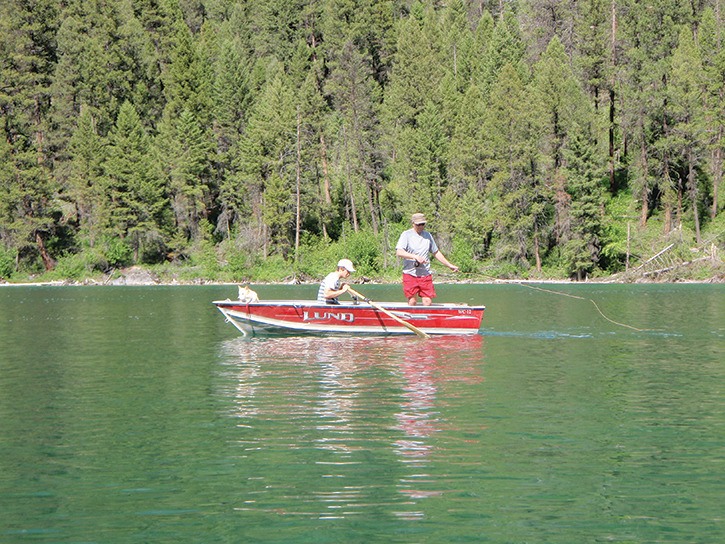As the weather warms, people from around British Columbia and the Columbia Valley specifically, will be grabbing their poles, purchasing some worms and making their way out to the closest stream to fish.
It’s an exciting time of year no doubt, but it’s also important time for local anglers to familiarize themselves on local fishing regulations, local conservation officer Greg Kruger said.
For the second year now, the Freshwater Fisheries Society and the BC Conservation Officer Service will be working in partnership to increase patrols to ensure anglers respect the rules and regulations across the province’s numerous lakes and rivers this summer. Specifically, the Conservation Officer Service will target popular areas, looking for illegal activity while encouraging compliance.
This increased focus on anglers started last year thanks to an agreement with the BC Freshwater Fisheries Society to provide additional resources to increase patrols to blitz high-traffic areas during peak times investigating compliance, Deputy Chief of the Conservation Officer Service Chris Doyle said.
Doyle said that this increased enforcement isn’t the result of an influx in criminal activity among the angler community, but mentioned the plan’s importance to future fishing generations down the road.
“We’ll gain compliance by simply being out there,” he said. “Most anglers are compliant with the regulations but there’s certainly some people who are trying to take extra fish or use illegal gear so part of the program is to determine in the future what the level of compliance is.”
Between May and November last year Conservation Officer Services spent an additional 2,017 hours on angling compliance and enforcement activities than in years past, issuing 559 charges and warnings across the province.
Locally, the areas and issues of concern can be much different from the overall provincial picture. According to Kruger, protecting Westslope Cutthroat Trout and Bull Trout species is one of the primary concerns for the East Kootenays region of the Conservation Officers Service.
Another concern put forward to them from the Fisheries Society is to increase patrols on classified waters across the region. For fishing in classified waters regulations stipulate that anglers receive a secondary classified waters license in addition to their fresh water-fishing license. In the Columbia Valley, this includes Skoohumchuck creek, White River and the upper regions of the Kootenay River. Kruger said that anglers also have to be aware of the specific regulations for each water source that they intend on fishing in with rules varying for each creek, river or lake around the area.
Kruger said that, locally at least, they haven’t added more officers to their patrols as much as they’ve refocused their resources during peak months like July and August. Similar to the provincial reports, Kruger said most anglers around the valley are compliant within the regulations but are under-educated on the specific rules for fishing, which can be a problem with financial consequences in some circumstances.
“We encourage anybody who’s going to head out fishing, whether it’s their first time or they’re a seasoned angler, one of the most important things is to make sure they know the regulations before they head out,” he said. “Where we get in trouble is when people say, ‘we didn’t know’ or ‘we didn’t know what the rules were.’ It’s definitely worth taking the time to self-educate before heading out to go fishing.”
Kruger also said that it is important for anglers to report any suspicious or illegal activity when it comes to fishing around the province to 1-877-952-7277 so that future generations of anglers are able to enjoy fishing as much as hundreds do today.
